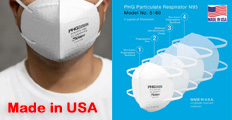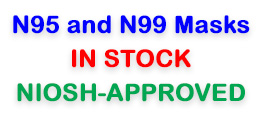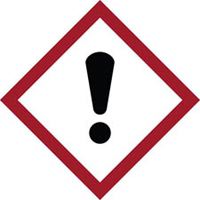



Find all of your laboratory and workplace safety supplies at Safety Emporium!
 Iridocyclitis |
 Glossary Index |
 IUPAC |
| MSDS Topics |
Free Sites | FAQ's | Regulations | Glossary | Software | Suppliers |
| Books | Forum | Poll | Fun stuff | Quiz | Store | |
| Understand your MSDS with the MS-Demystifier | Search ALL our MSDS info | |||||

Ohaus analytical balances from Safety Emporium have enclosures which can help minimize your exposure to irritants.
An irritant a chemical, which is not corrosive, but which causes a reversible inflammatory effect on living tissue by chemical action at the site of contact. This effect is called irritation.
More generally, an irritant is a substance which on immediate, prolonged, or repeated contact with normal living tissue will induce a local inflammatory reaction.
Appendix A of the 2012 version of 29 CFR 1910.1200, the OSHA Hazard Communication Standard (HCS 2012), specifies three specific types of irritation based on the site and type of reversible damage:

Get your GHS-compliant labels and signs from Safety Emporium.
With the adoption of HCS 2012, OSHA enacted the US version of the Globally Harmonized System of Classification and Labeling of Chemicals (GHS). The GHS uses a series of Hazard Statements (H-Statements) as well as Precautionary Statements (P-Statements) to provide standardized warnings for working with chemicals, including those classified as irritants. In addition, labels (and, optionally, Safety Data Sheets) will use pictograms, visual graphic elements designed to catch the user's attention. With respect to irritants, the exclamation mark pictogram (shown on the right here) will appear on the label when the material is a Category 2 eye or skin irritant.
Under the now-obsolete 1994 version of the HazCom Standard (HCS 1994), an irritant was defined more succinctly as:
a chemical, which is not corrosive, but which causes a reversible inflammatory effect on living tissue by chemical action at the site of contact. A chemical is a skin irritant if, when tested on the intact skin of albino rabbits by the methods of 16 CFR 1500.41 for four hours exposure or by other appropriate techniques, it results in an empirical score of five or more. A chemical is an eye irritant if so determined under the procedure listed in 16 CFR 1500.42 or other appropriate techniques."
16 CFR 1500.3 defines a primary irritant as a substance that is not corrosive and that human experience data indicate is a primary irritant and/or means a substance that results in an empirical score of five or more when tested by the method described in Sec. 1500.41.
The effect of irritants is temporary. For example, pepper spray is a severe eye irritant, but causes no lasting effects. Chronic irritation should be discussed with your physician as it can be symptom of a variety of other underlying disease conditions or allergies.
It is sometimes difficult to tell whether an itch, redness or other irritation is the result of a chemical exposure. Be sure to wear personal protective equipment (PPE) (such as gloves, goggles, aprons or dust masks) that is effective for the kind of irritant you are working with. You can find recommendations for preventative measures in Section 8 (exposure controls/personal protection) of the Safety Data Sheet for the material.

Safety Emporium carries all kinds of eye/face washes, safety showers, drench hoses and more.
Symtoms of exposure to a substance will be listed in Section 11 (toxicological information) of the SDS. If you are exposed to the material and are suffering irritation or other symptoms, consult Section 4 (first-aid measures) for recommended treatment.
First aid treatment for skin irritation usually involves flushing the affected area with water. Consult a physician if the symptoms persist or you have concerns about possible transdermal (through the skin) toxicity.
The most effective first aid treatment for eye irritation caused by chemicals or foreign bodies in the eye is to flush the eyes with an ANSI-approved eye wash. Follow up with a physician, especially if a foreign body was involved (corneal abrasions or scratches are possible) or the chemical was basic (bases can cause severe eye damage even with water flushing).
Respiratory tract irritation can be complex. If you inhale chemical fumes, dusts, mists, or vapors and your throat and lungs are irritated, seek professional medical advice.
See also: dermatitis, inflammation, sensitizer, urticaria, vesicant.
Additional definitions from Google and OneLook.
Entry last updated: Monday, January 2, 2023. This page is copyright 2000-2025 by ILPI. Unauthorized duplication or posting on other web sites is expressly prohibited. Send suggestions, comments, and new entry desires (include the URL if applicable) to us by email.
Disclaimer: The information contained herein is believed to be true and accurate, however ILPI makes no guarantees concerning the veracity of any statement. Use of any information on this page is at the reader's own risk. ILPI strongly encourages the reader to consult the appropriate local, state and federal agencies concerning the matters discussed herein.